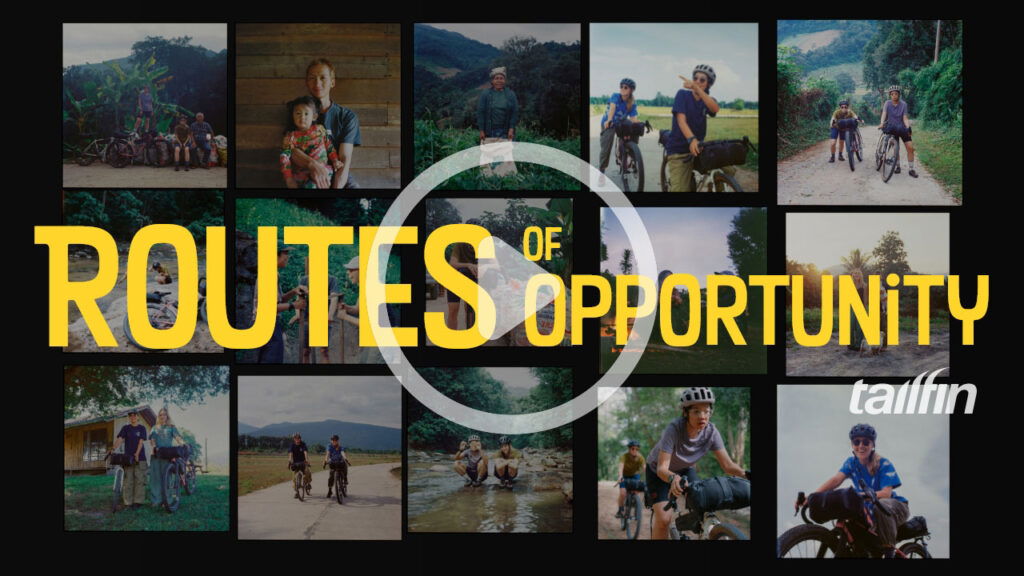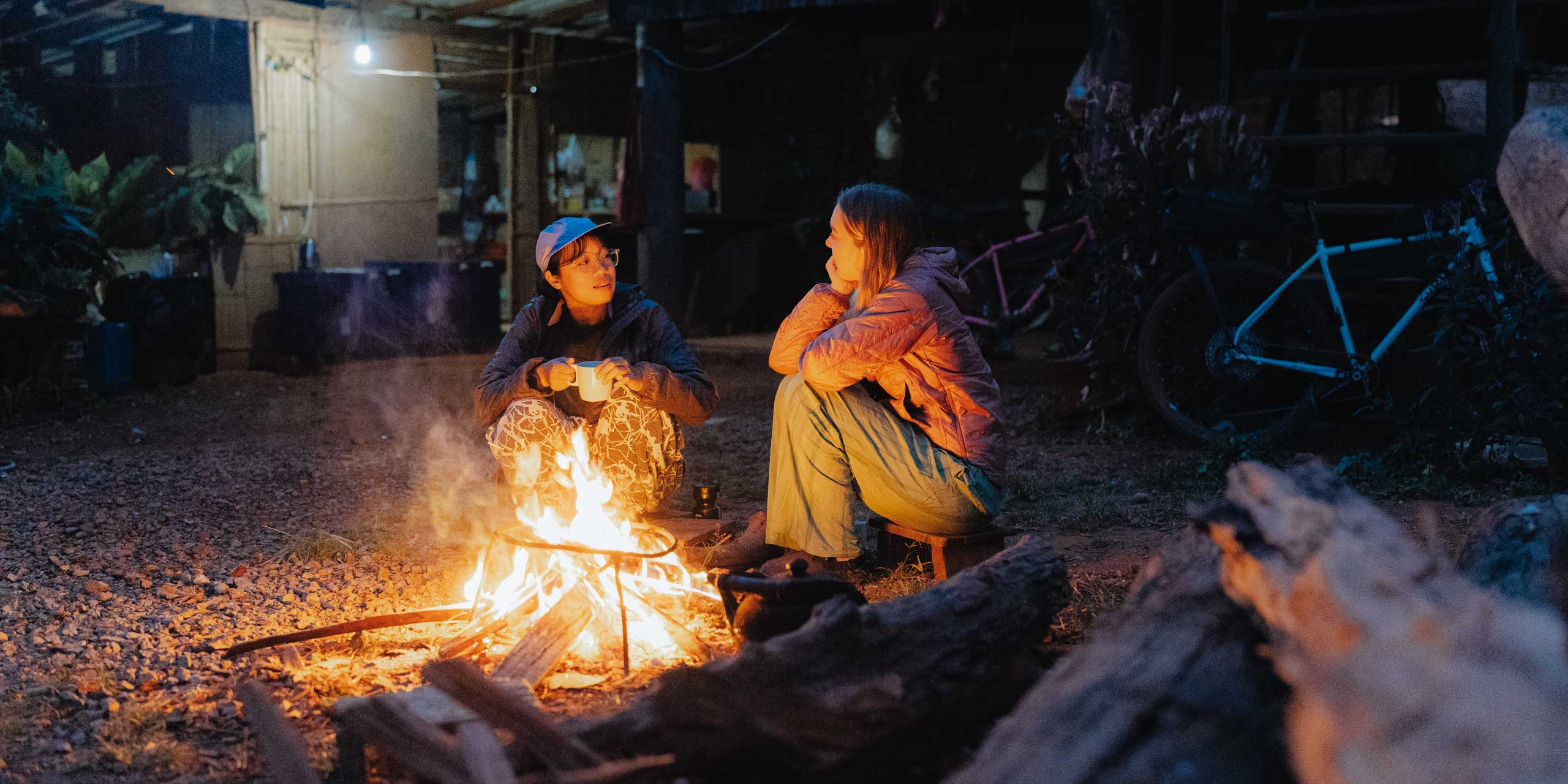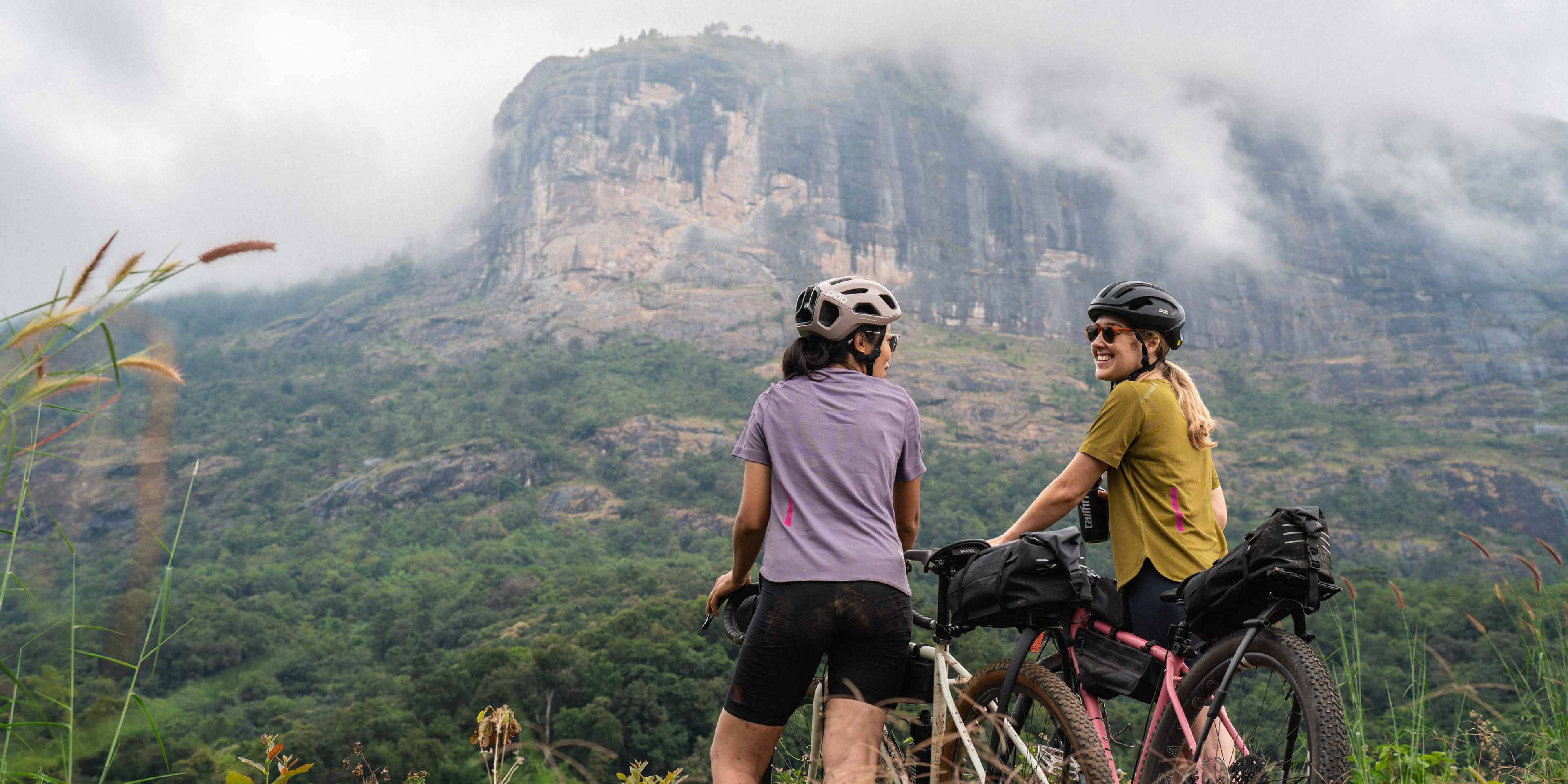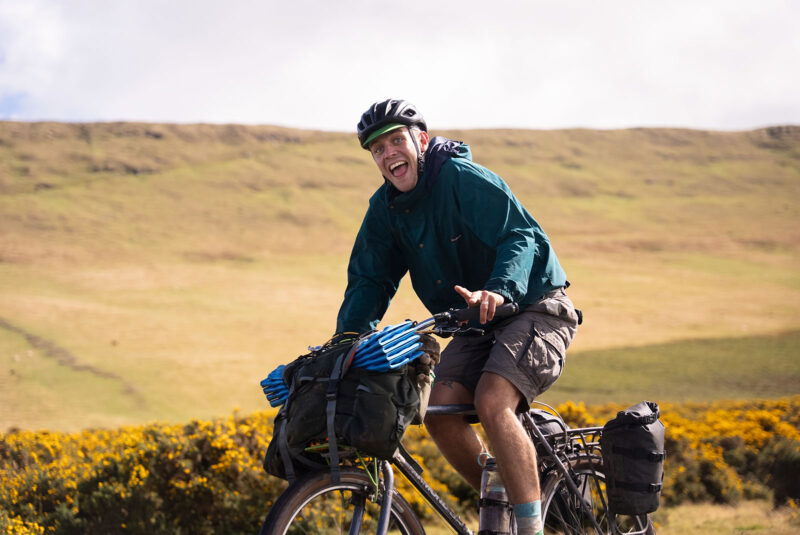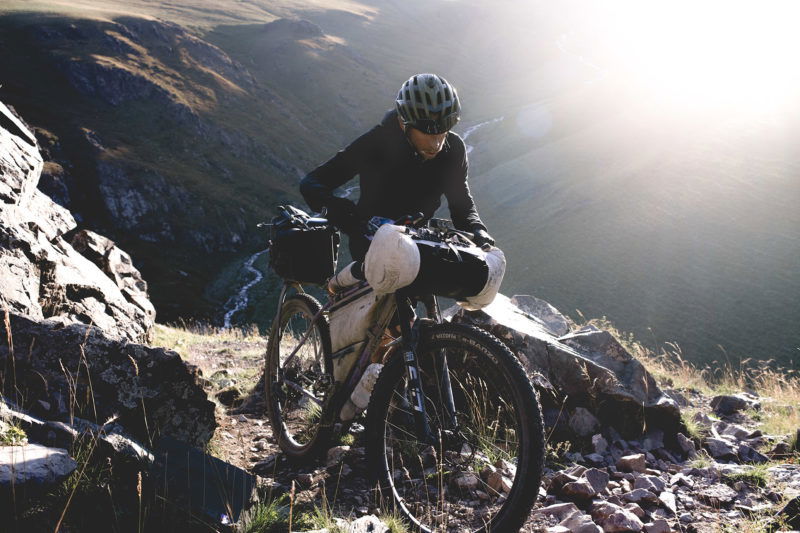Routes of Opportunity
Sam Rice, seasoned adventurer, dedicated route builder and part of the team behind the Tiger Head Mountain Loop, shares insights from crafting a sustainable bikepacking route that connects travellers with Thailand’s remote landscapes while supporting local communities.
Words, Video, and Images by Sam Rice
Jump to the film (at the bottom of the article)
The Route
Tiger Head Mountain Loop is a 137 km (85 mile) bikepacking route in Thailand that weaves riders through a diverse tapestry of tropical terrain. Here, ancient hill tribe cultures remain unchanged while pristine jungle wilderness explodes around you. The route combines remote dirt tracks, untamed singletrack, and Thailand’s raw natural beauty to deliver a powerful blend of challenging riding, pushing, and authentic cultural experiences you’ll never forget.
- Distance: 137km | Elevation: 3,100m
- Number of Days: 3
- Surfaces: 50% unpaved, 10% singletrack
- High Point: 1,687 masl
- % Rideable: 90%
- Location: Chom Thong, Thailand
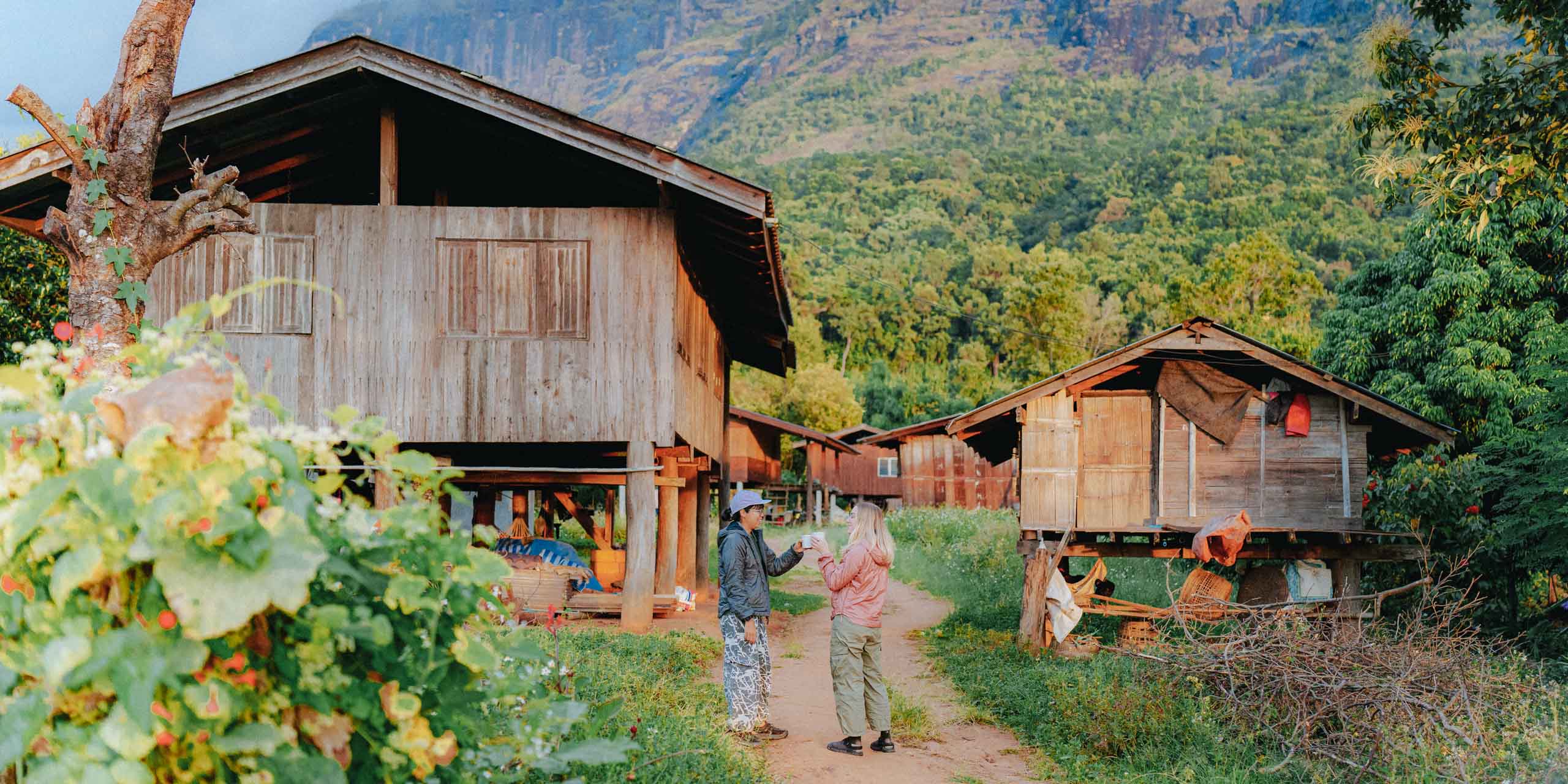
Bikepacking Thailand – A Genesis Story
In February 2023, we released South East Asia’s first bikepacking route: The Lanna Kingdom in Northern Thailand. Since then, the route has exploded in popularity, attracting around 1500 bikepackers worldwide and winning bronze in bikepacking.com’s 2024 best new route awards.
Feeling the route’s success and seeing its growing impact, Bec and I decided to move to Chiang Mai permanently. Eager to establish ourselves in the city, create fresh routes, and connect with the local bikepacking community, we quickly met Pele, a passionate local bikepacker and all-around adventure enthusiast.
That winter, we rode together in Pele’s hometown of Chom Thong. She guided us through beautiful rice paddies, up into small villages, and into the sprawling jungle surrounding her home. Pele’s intimate knowledge of her home region was eye-opening. Despite being just an hour south of Chiang Mai, the landscapes, communities, and riding experiences in Chom Thong were dramatically different from what we’d experienced on The Lanna Kingdom. The contrast was striking: different hill tribe communities, unique cultural practices, and terrain that offered new challenges and rewards.
“I grew up exploring these mountains,” Pele told us during one of our early scouting rides. “There are places here that most Thai people don’t even know exist.”
As we rode with Pele through her childhood stomping grounds, we began to see the potential for a route that could showcase this corner of Thailand. The idea for Tiger Head Mountain Loop emerged not from our desire to simply create another bikepacking route, but from Pele’s enthusiasm to share her home with the world.
Our route building philosophy
Before diving into how we co-created Tiger Head Mountain Loop, we want to share the guiding principles that shape our route development work.
Simply put: We aim to design more than just exciting trails to ride on a bike. We believe in creating rich experiences that connect riders with local people, cultures, landscapes, and traditions. We see bikepacking routes as living stories, with each day offering a different chapter to discover and experience.
Collaborate with champions
All of our routes are designed with local bikepackers and friends. These champions bring intimate knowledge of the terrain, culture, and communities in each region. Without them, navigating the different traditions, languages, and norms of various local groups would be impossible. They are the true heroes of these routes.
Community-centered design
Every route we develop is intentionally crafted alongside the communities it passes through. We extensively consult with local residents, explaining the potential impacts of introducing a bikepacking route, addressing their concerns, and helping establish necessary amenities and infrastructure. This ensures the route positively benefits both riders and the communities that welcome them.
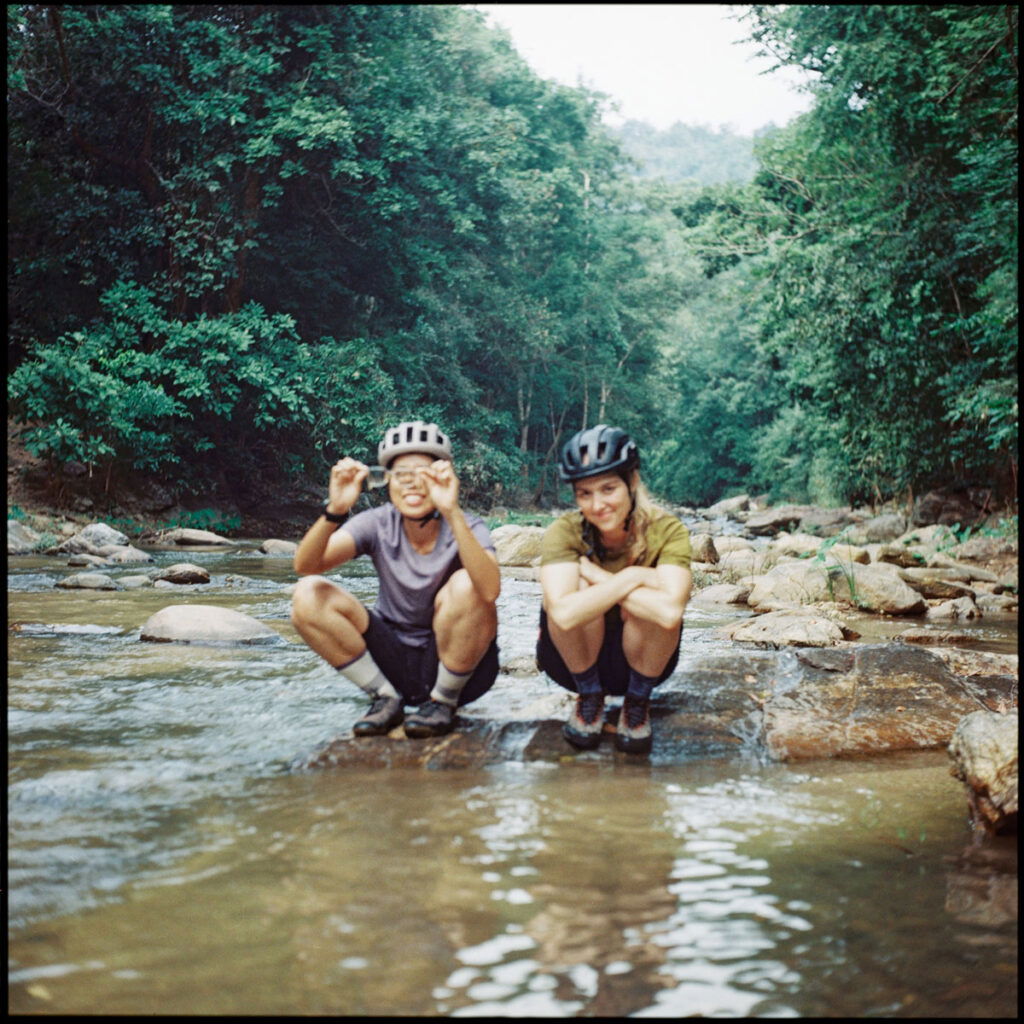
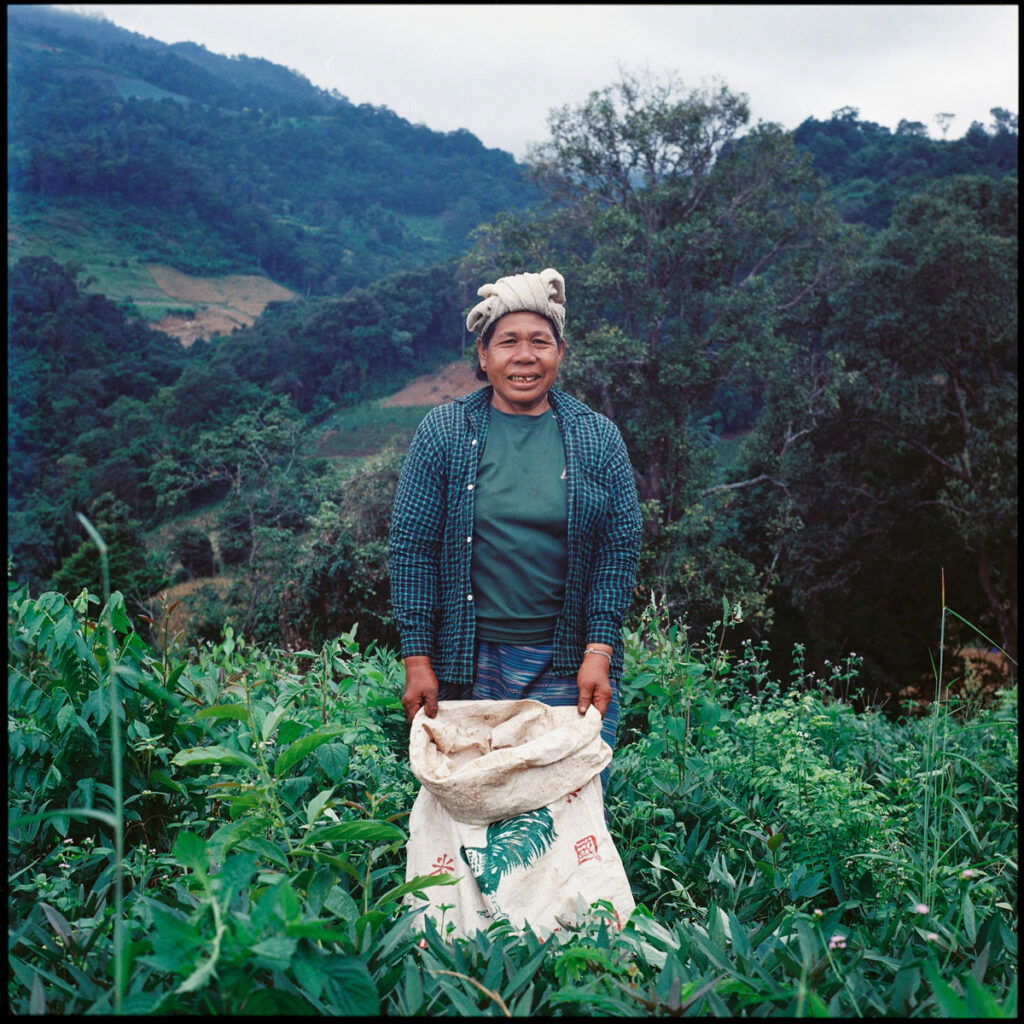
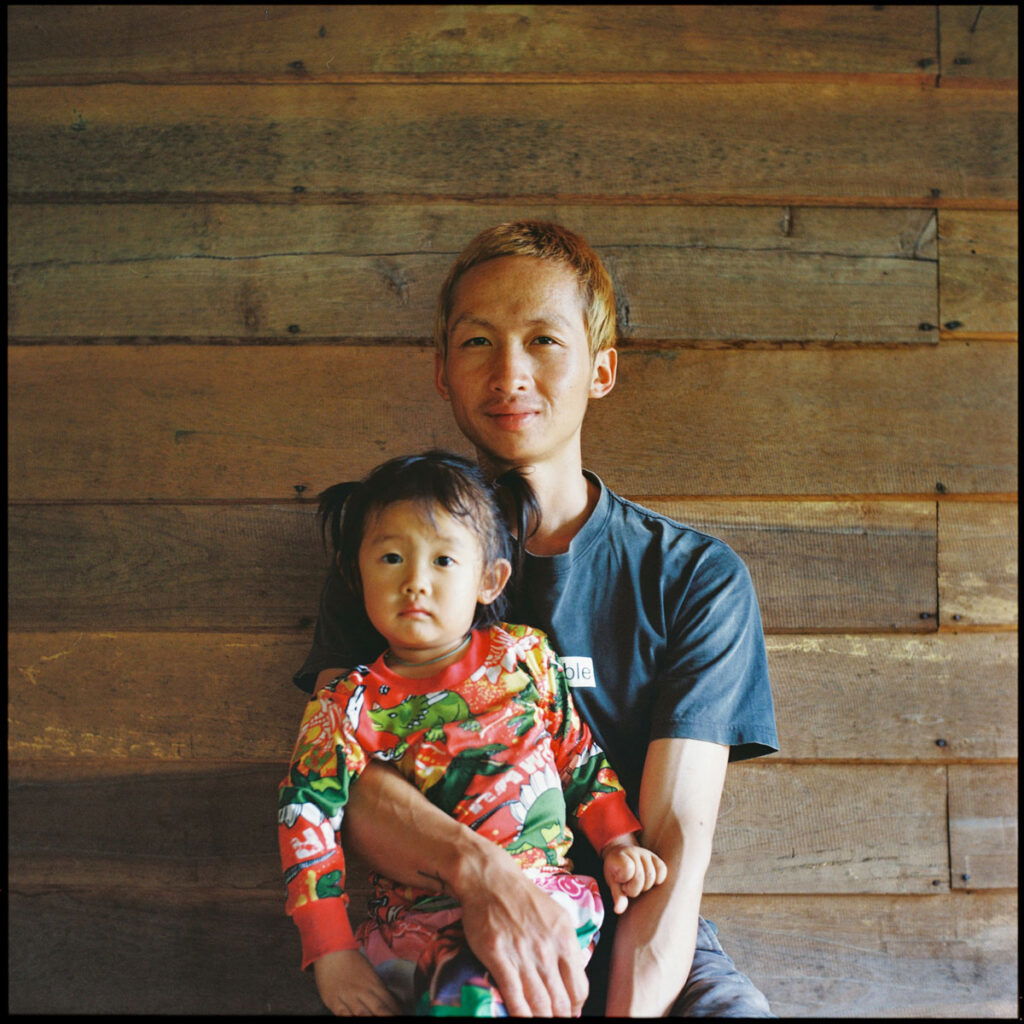
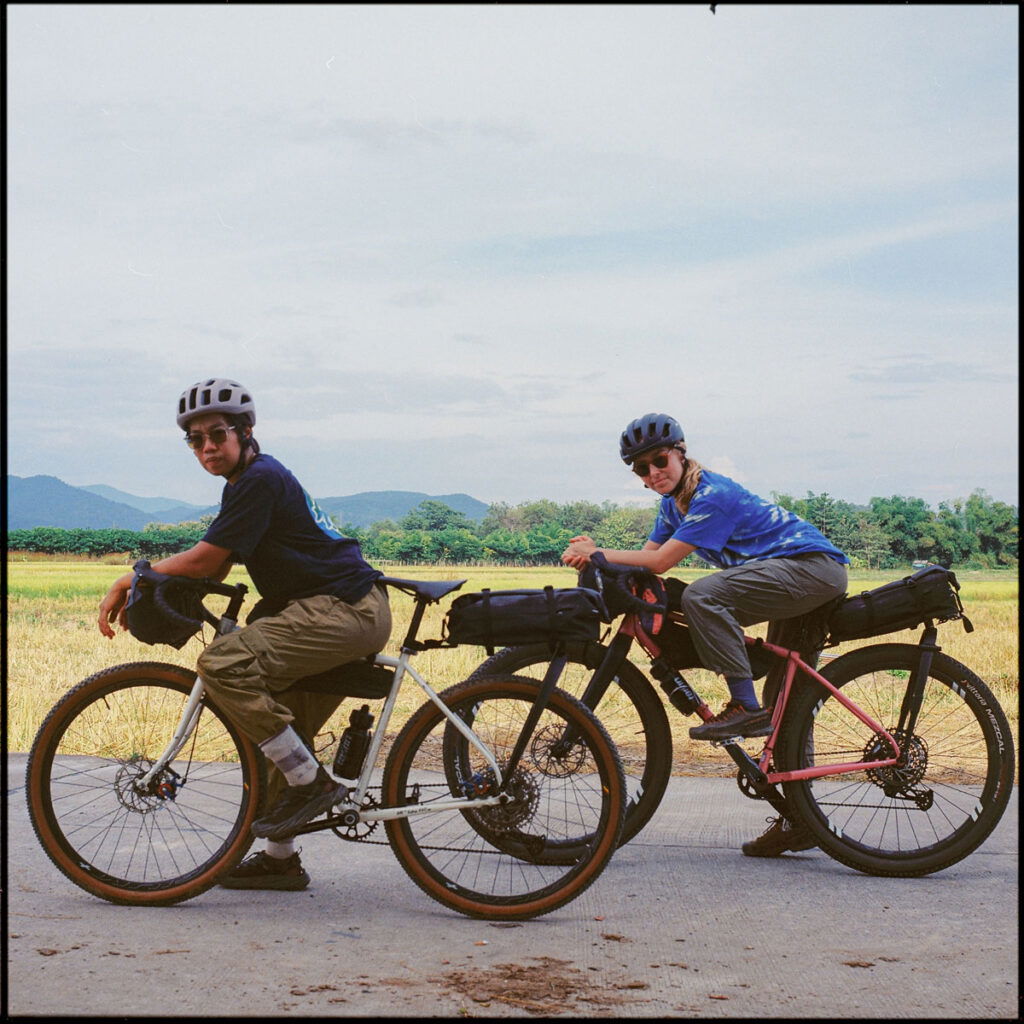
Designing a route: tone, tempo, and story
From the outset, we wanted Tiger Head Mountain Loop to celebrate everything these mountains offer: rich hill-tribe cultures, challenging dirt roads, hidden singletrack, untamed jungle, and breathtaking vistas. But designing a route isn’t just about connecting beautiful spots, it’s about crafting a story that flows naturally. Good routes vary in tempo, challenge, pace, and reward.
We established early that we needed at least a 50/50 split between paved and unpaved surfaces. The mountain already had a well-established and stunningly beautiful road climbing up its flanks, giving us a solid foundation. From there, finding the flow for Tiger Head Mountain Loop took the entire winter season. Three full months of research, riding, and exploring every gravel road, dirt track, and potential singletrack trail in the region.
Exploration and route building
This exploration phase was equal parts exhilarating and frustrating. We got lost more times than we could count, sometimes ending up in dense jungle with no clear path forward, other times discovering that promising trails on satellite imagery were actually impassable in reality. But these “failures” were essential to the process; each dead end taught us something new about the mountain and occasionally led us to unexpected gems we might never have found otherwise.
After countless hours in the saddle, numerous GPS tracks, and many conversations with local villagers about trail conditions throughout the year, we gradually pieced together a route with (what we think) is the perfect balance of challenge and flow for a 3-day bikepacking route. The final design combines sections that push riders to their limits (mainly up insanely steep climbs) with moments of pure joy and discovery, while ensuring the route remains approximately 90% rideable, challenging but not overwhelming.
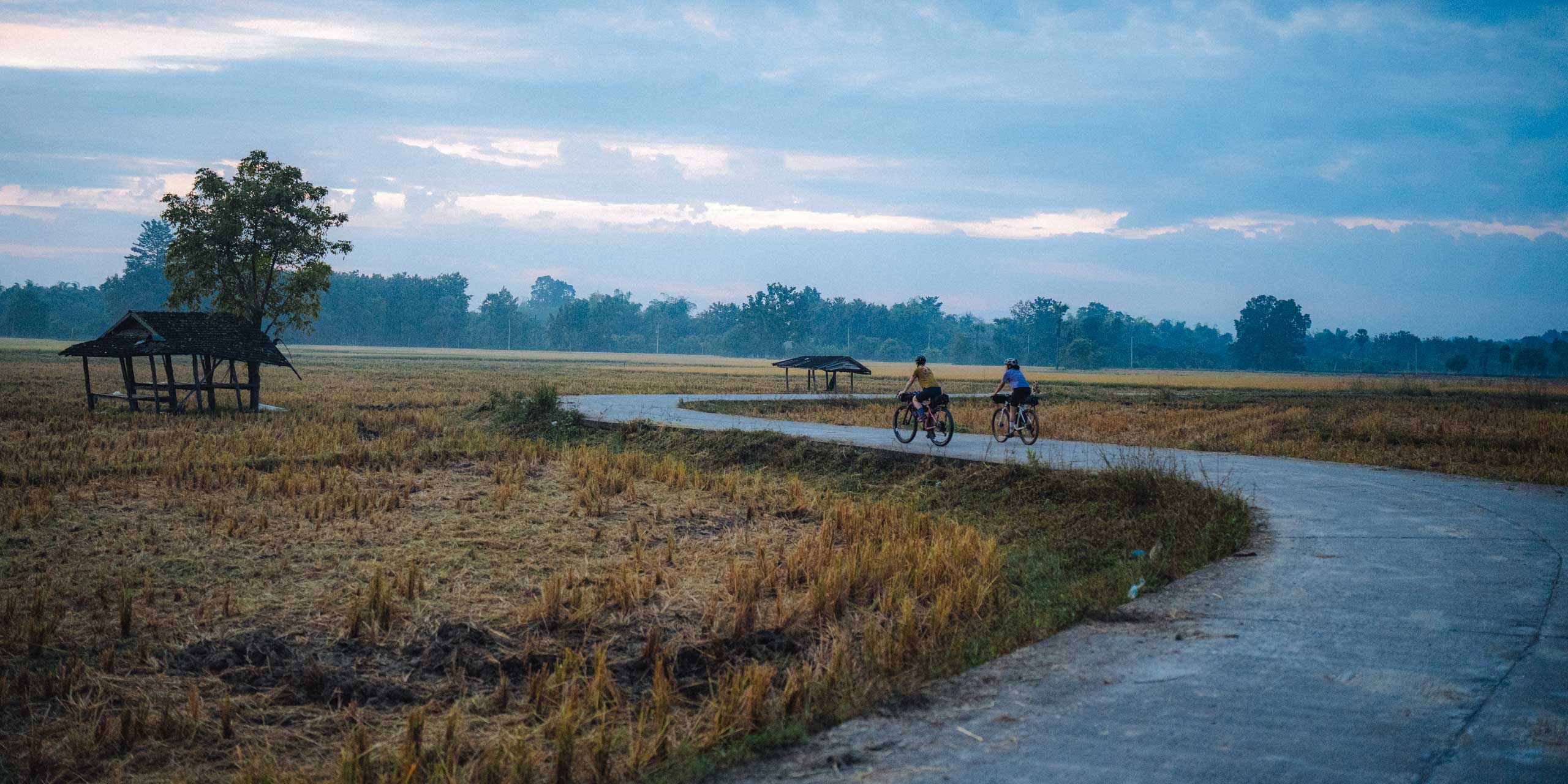
The Challenges of building routes
Building a route anywhere isn’t easy. But piecing together Tiger Head Mountain Loop and navigating its remote nature, various hill tribe cultures, and lack of infrastructure presented a whole new challenge for us. Here are some of the things we faced:
1. Tricky terrain:
The terrain itself presented the most immediate obstacle. With gradients reaching 28% both uphill and downhill on loose gravel surfaces, we had to carefully consider how these sections would affect different riders. Stretches that we could clean on mountain bikes with fresh legs became nearly impossible after a full day of riding, especially on gravel bikes with narrower tires.
2. Limited resupply:
Despite much of Thailand being densely populated, resupply points on some sections of Tiger Head Mountain Loop are few and far between. The hill-tribe communities in the area are remote and self-sufficient, making shops, groceries, and restaurants scarce.
We worked diligently to plan the route around these precious resources while preserving the route’s remote character. This careful planning also meant ensuring both the GPX file and accompanying route notes were detailed and accurate for riders, because let’s face it, getting hangry in the jungle isn’t fun for anyone.
3. Emerging infrastructure:
Like the resupply limitations, homestays and suitable campsites along the route were difficult to find. This challenge stems mainly from the self-sufficient nature of the Karen people and the lack of tourism in this area. However, with our vision to share the culture and traditions of these mountain villages, we needed to get creative.
We drew on our connections with the local people, built a brand new campsite from scratch, and helped one of the villages (Baan San Ding Dang) create a new homestay and café to house and feed riders.
Community-centered design: The heart of route building
The majority of the communities along Tiger Head Mountain Loop belong to the Karen (Pakanyor) Hill Tribe community, a vibrant ethnic group spread across Southeast Asia. Though they trace their origins to the Gobi Desert and Mongolia, today they live throughout Northern Thailand in hill tribe communities where they preserve their traditional lifestyle and autonomy.
For the three of us, building a route that felt organic and integrated with the Karen communities was our main priority. We wanted to share the genuine hospitality we had experienced in these villages with other riders, while ensuring the Karen people maintained control over how they engage with visitors and benefit from their presence.
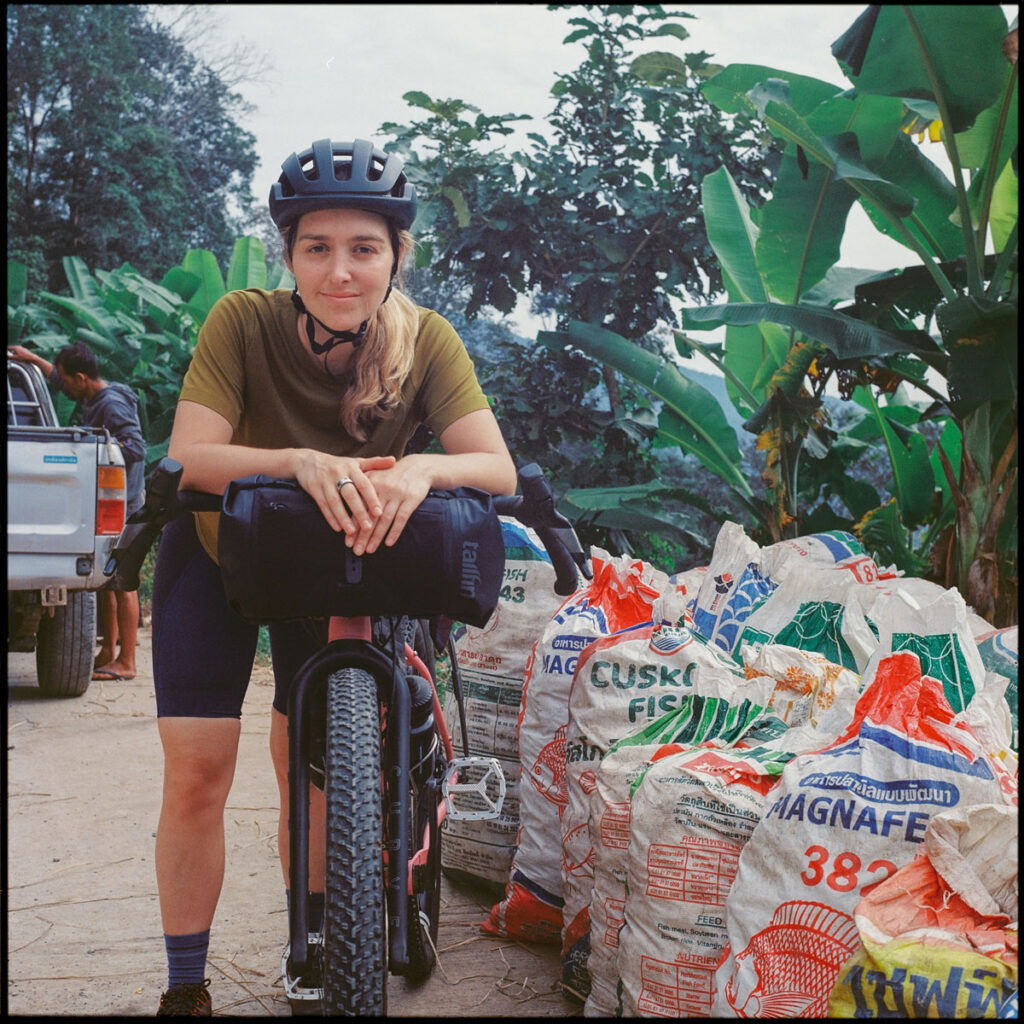
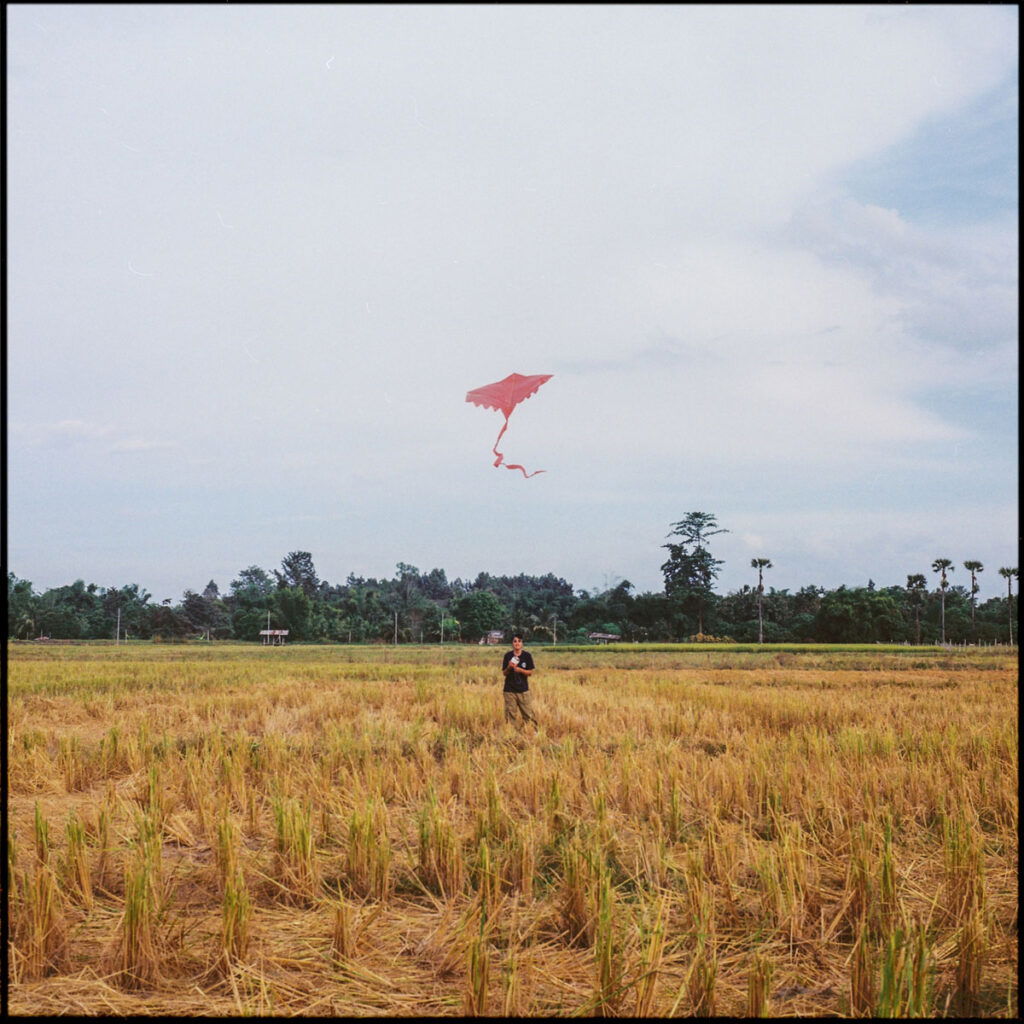
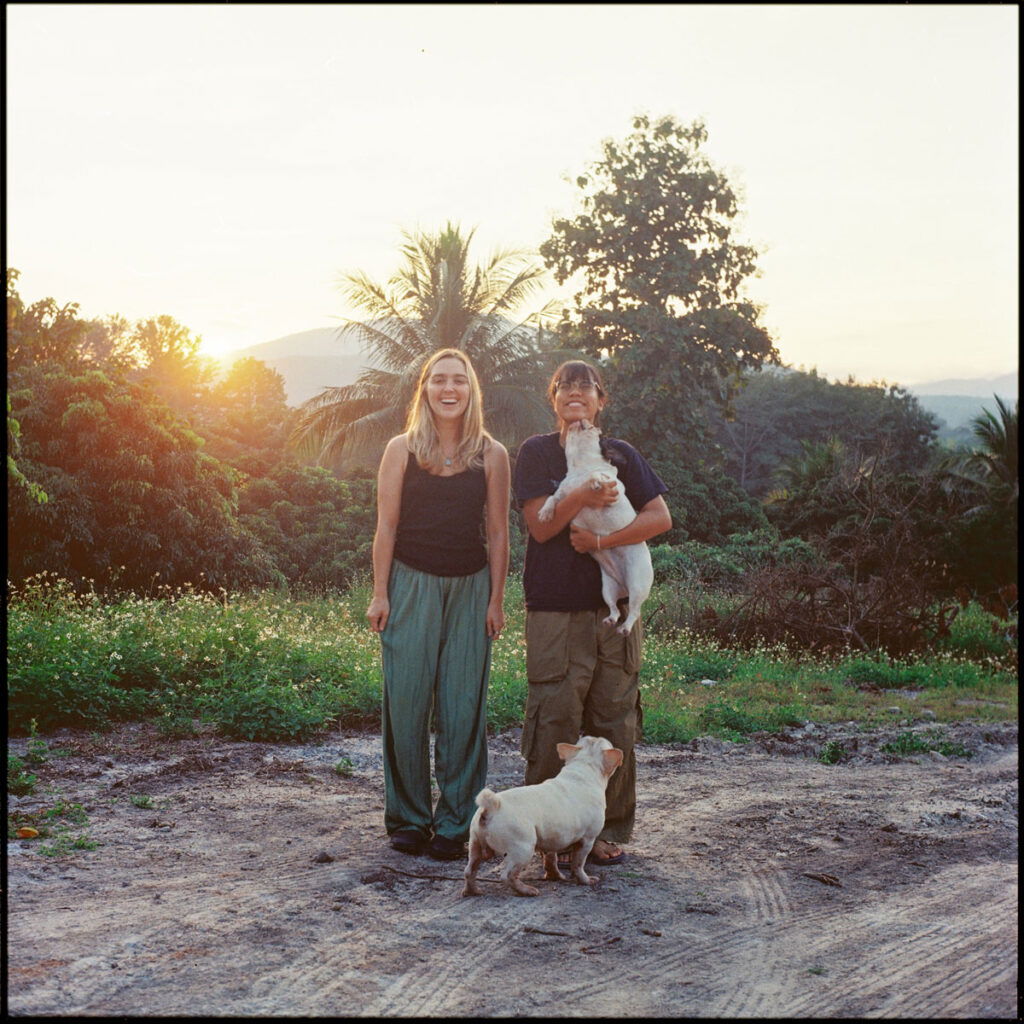
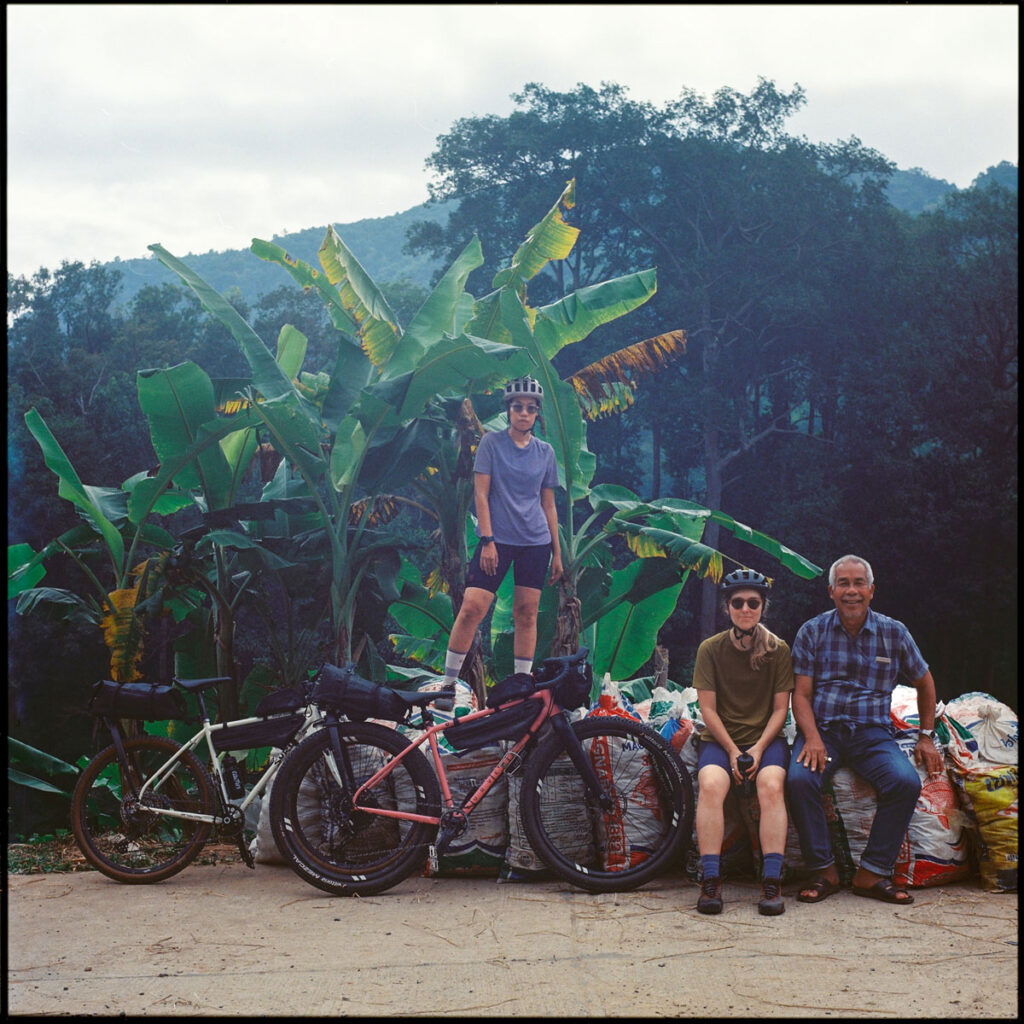
To bring this vision to life, we relied heavily on Pele to help facilitate conversations with the various communities. In Baan San Ding Dang, Khun Tea, and Baan Tin Tok (where the route stops each day), we spent months building relationships and trust with local residents. Pele helped us lead multiple community meetings where we openly discussed what a potential bikepacking route might mean for each village. We stayed transparent about both potential benefits and challenges, allowing communities to make informed decisions about their level of involvement.
During this phase of the route’s development, we learned to listen more than we spoke, to respect local decision-making processes, and to recognize that our vision needed to align with the communities’ hopes for their futures.
The results of this collaborative approach have been remarkable. In just the first two months of the route’s launch:
- 1x new specialty coffee shop has been built in San Ding Dang
- 50+ riders have ridden the route, flying in from around the globe (including 2 people from Tailfin HQ)
- P’Than’s Homestay has been booked out almost every night
- 2x new small businesses, a local shop and a small restaurant have opened in Khun Tea to serve both riders and community members.

Lessons learned: the art and science of route building
Creating Tiger Head Mountain Loop taught us valuable lessons about the art and science of route building in remote areas.
Co-creation is key
Perhaps the most important lesson is that successful routes are co-created, not imposed. By partnering with Pele and engaging deeply with local communities, we ensured the route reflected local knowledge, respected cultural boundaries, and created mutual benefits for everyone involved.
The value of patience
We also learned that patience is essential. Good routes take time to develop, time to explore different options, time to build relationships with communities, and time to test and refine based on real experiences. The months we spent scouting might seem excessive for a 137km route, but that investment allowed us to create something truly special and authentic.
Beyond technical considerations
Technical considerations matter, but they’re only part of the equation. While we spent considerable energy finding the right balance of surfaces and challenges, the heart of the route lies in the experiences it facilitates; the cultural exchanges, the natural wonders, the moments of connection that can’t be measured in distance or elevation gain.
An ever-evolving journey
Finally, we learned that route building is never truly finished. As riders experience Tiger Head Mountain Loop and share their stories, as communities along the route develop their offerings, and as the landscape itself changes with seasons and years, the route will continue to grow and adapt organically each season.
Check out the full Tiger Head Mountain route here.
Watch the film
